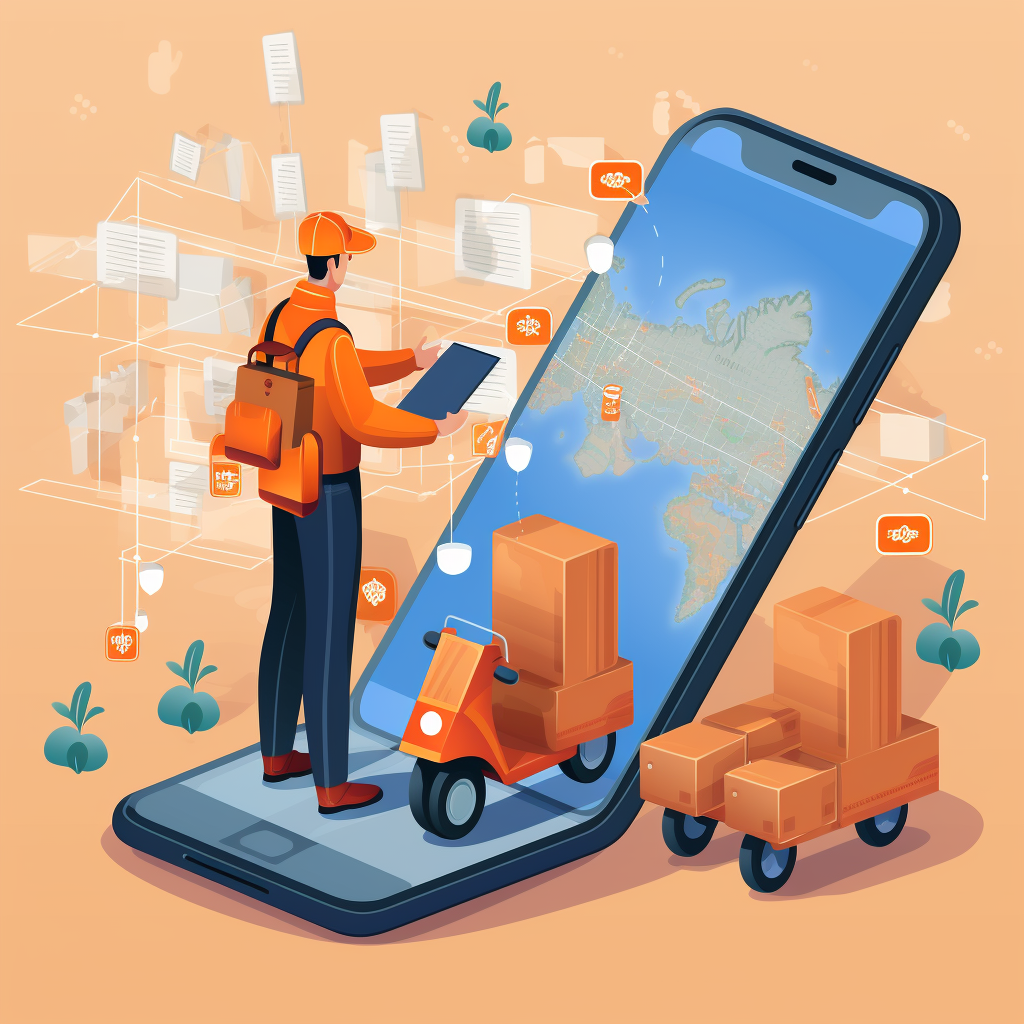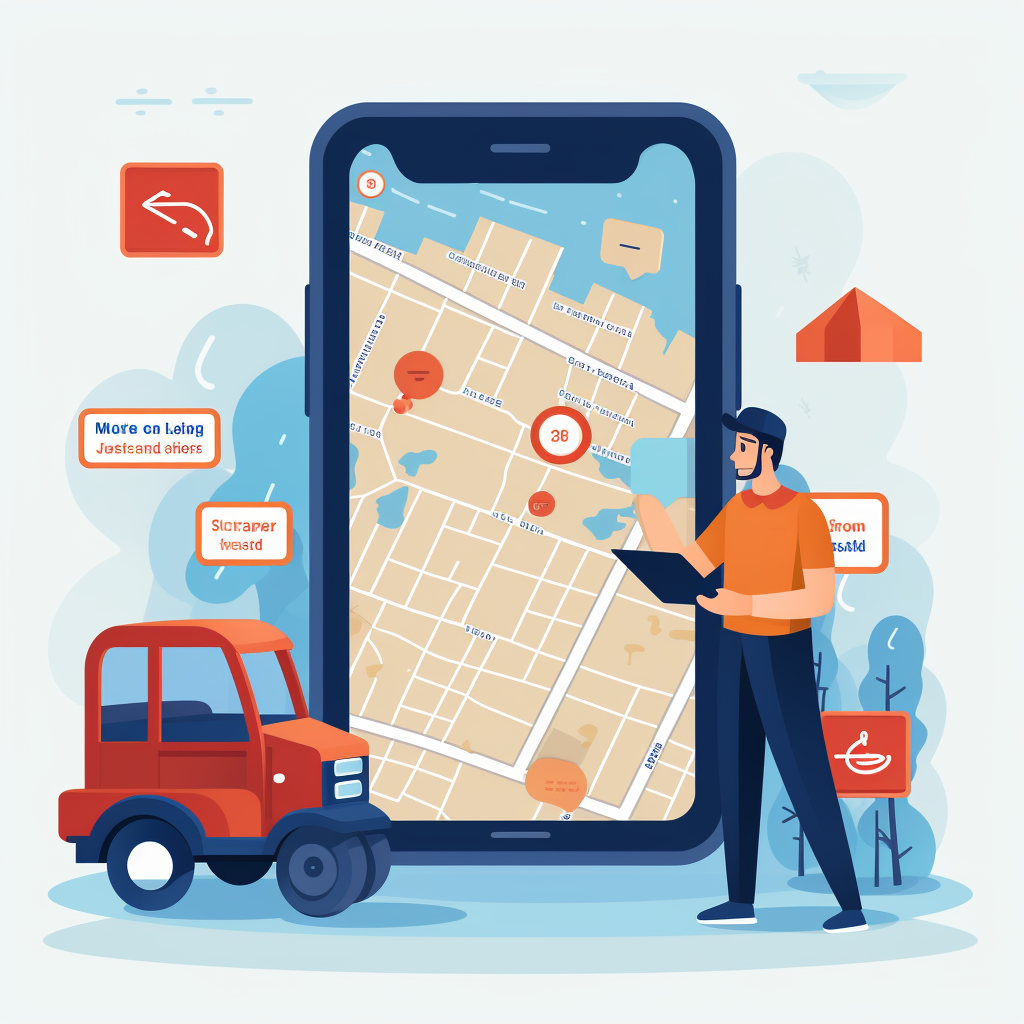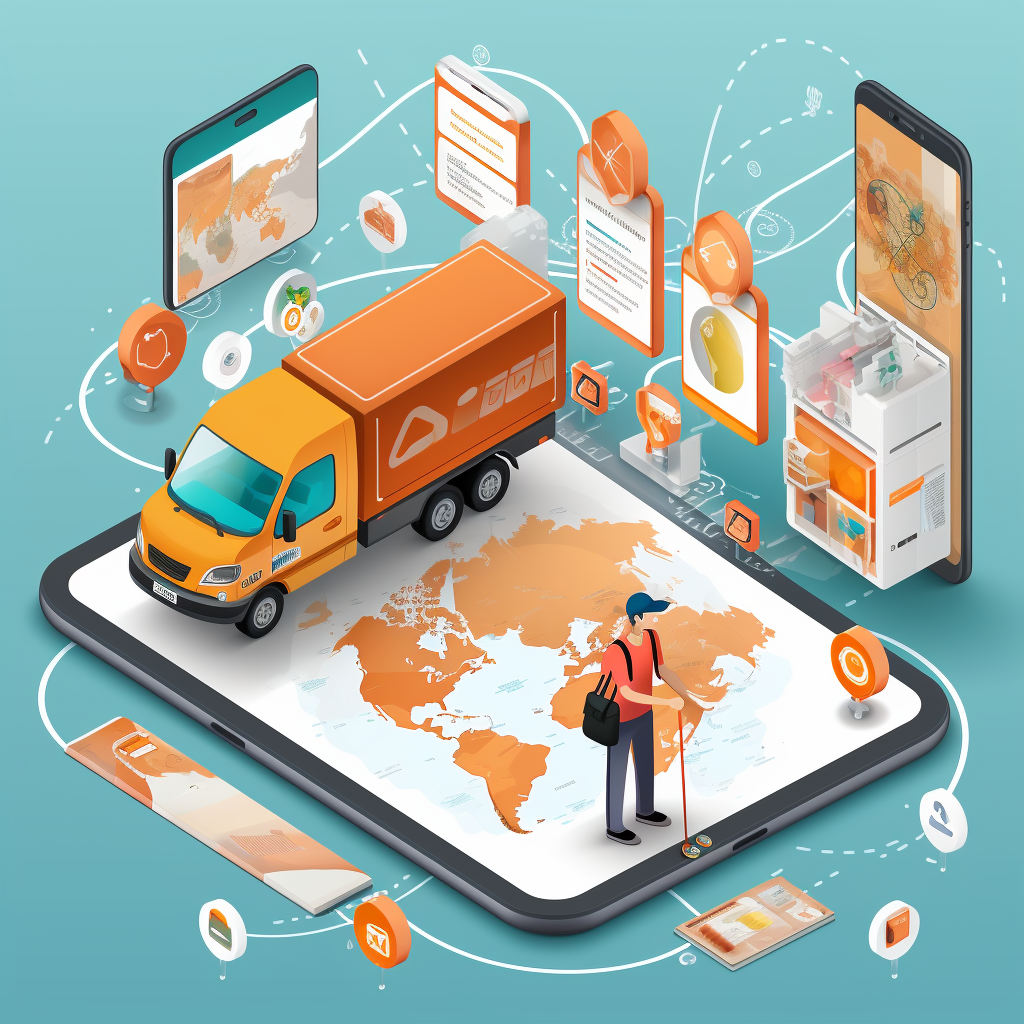In a world where managing deliveries becomes as simple as launching a smartphone app. Effortlessly optimize routes, manage constraints, and access comprehensive reports. Welcome to the 2024 digital world, where delivery management apps like DynoRoute will revolutionize business operations.
Let's now travel back in time and explore the evolution of delivery apps. Not too long ago, businesses struggled with chaotic processes, aiming to streamline operations. Both small businesses and large corporations searched for efficiency. Then, the solution emerged: delivery apps. These apps turned the tables for businesses, ushering in an era of smooth deliveries and heightened productivity.
Fueled by advanced algorithms and significant impact, the delivery revolution arrives, courtesy of delivery apps. DynoRoute, with features like adaptive priority stops, real-time integration, and multi-platform compatibility, empowers businesses. Embrace this revolution to future-proof your delivery management.
Join us to explore a world where exceptional service is the norm. Let's uncover the essence of a delivery management app. Stay tuned for an enthralling journey reshaping your understanding of delivery logistics.
Why Does Your Business Need a Delivery Management App?
In today's digital age, having a top-tier Delivery Management app like DynoRoute isn't just a luxury; it's a necessity. Customer expectations are continuously evolving, and businesses need to keep pace. Through DynoRoute, businesses can optimize their delivery operations, adding value to their service and fostering customer loyalty.

Beyond mere doorstep delivery, these apps ensure efficiency, seamlessness, and satisfaction — from warehouse to doorstep. A survey revealed that 90% of consumers would avoid a retailer after a bad delivery experience. Prevent this with a dependable delivery management app.
How Does a Delivery Management App Enhance Customer Experience?
In the realm of delivery services, apps like DynoRoute are true game-changers. With features like real-time tracking, these apps not only ensure efficient business operations but also provide customers with regular updates on their deliveries. This proactive approach significantly enhances the overall Customer Experience, reinforcing trust and fostering long-term loyalty.
In the realm of customer experience, rapid and dependable delivery is pivotal. Delivery management apps guarantee swift deliveries, providing customers with timely service, thereby enhancing their overall experience positively.
Customer expectations extend beyond swift delivery. Open communication lines are vital for consistent satisfaction. A Delivery Management app enhances communication between customers and delivery personnel, providing a seamless platform for essential interactions.
Table: Delivery Management App Efficiency
| Factor | Without App | With App |
|---|---|---|
| Delivery Time | 2-3 days | Same-day |
| Communication | Difficult | Easy |
| Tracking | Limited | Real-Time |
The future of deliveries is transformed by apps like DynoRoute. These technologies streamline processes, enhance customer relations, and generate significant ROI. DynoRoute's differentiator lies in its human-centric approach. Satisfied customers are the foundation of success in delivery management.
Elevate business operations with a Delivery Management app. To learn more, explore this Forbes article on the transformation of retail through digitized supply chains and delivery services.
On the journey of ensuring impeccable deliveries, next comes the critical task —### What to Look for in a Delivery Management App? To be continued…
What to Look for in a Delivery Management app?

The dynamism of the delivery industry urges the necessity for an effective Delivery Management app. But what makes a Delivery Management app stand out? It's not about possessing every feature under the sun but the right ones that align with your business needs.
A good Delivery Management app is one that optimizes routes dynamically, considering various factors such as distance, time, and specific constraints. Every business is unique, and so are its needs. An efficient app would cater to these needs by minimizing travel distance, avoiding traffic jams, and maximizing productivity.
I'm the owner of DynoRoute, and my experience emphasizes the significance of a Delivery Management app that offers an advanced delivery optimization algorithm, which organizes stops most practically. The goal here is a smooth workflow that enhances efficiency and productivity.
Why is the User Interface Important in a Delivery Management App?
I can't stress enough the prominence of user-friendly interfaces on productivity. An application's User Interface plays a significant role in its adoption rate. People naturally gravitate towards things that are easy to understand and navigate. A complex UI can deter users, resulting in a low adoption rate.
Think about it. Would you, as a business owner, prefer an app that leaves you scratching your head or one that is easy to navigate and simplifies the delivery process? The answer is quite evident. Due to this, DynoRoute features a user-friendly interface conveniently integrated with popular navigation apps, such as Google Maps.
Additionally, a customizable UI design also adds to the ease of use. With DynoRoute, businesses have the power to tailor settings to their specific requirements. Simplicity and functionality go hand in hand to give users a full-proof delivery management solution.
Furthermore, app adoption goes beyond just the employees. Consider your drivers. In my experience, drivers greatly appreciate real-time insights and clear delivery instructions. That's why DynoRoute provides an interface that just does that, making the delivery process more efficient.
As the delivery business evolves, the role of Delivery Management apps grows more vital. Adopting the right app is an essential move for businesses wanting to streamline operations, boost productivity, and enhance customer satisfaction. However, the question remains: how does one implement such a Delivery Management App effectively? Stay with us as we dive deeper into this in the subsequent section!
Simplify Your Operations with A Delivery Management App

How can a business succeed in this dynamic world? The answer lies in efficiency. And nothing drives efficiency better than a well-implemented Delivery Management app. But how do you implement it? Let's discuss it!
Training Your Team for Adaptation to A New Delivery Management App
First off, it begins with your team. Getting everyone on board with using the new app is crucial to its successful implementation. Here’s a step-by-step guide for smoothly initiating the process:
Begin with a hands-on demonstration: Show your team how the app works in real life. You could use real orders or mock-ups for this.
Hold practical training sessions: Allow your team to interact with the app. Let them explore its features, make mistakes, and learn from them.
Provide support: Resolve any queries or obstacles they face during their learning phase. This could be in the form of manuals, FAQ guides, or in-app support options.
Adapt your operations: Once your team is well-versed with the app, slowly integrate it into your daily affairs. Start with a soft integration, and as you get comfortable, expand it to your entire delivery operations.
With the right training, you don’t just implement the app in your operations but also instill a learning culture within your team. This often results in a digitally literate and adaptive workforce ready to take on challenges head-on.
Challenges & Solutions during the Implementation of A Delivery Management App
However, the transition to a new Delivery Management app isn’t always smooth. There could be hiccups along the way. But worry not! Let's explore some common obstacles and how you can overcome them:
| Obstacle | Solution |
|---|---|
| Employee Resistance | Encourage an open environment for discussing fears and doubts about the new app |
| Technological Constraints | Ensure your tech infrastructure can support this new application |
| Training Difficulties | Provide comprehensive training and accessible support channels |
So, don't let these challenges deter you from adopting DynoRoute. With clear communication, proper training, and commitment, you can overcome these obstacles with ease. Remember, learning new technology is a part of growth, and this new Delivery Management app can be a dynamic boost to streamline your operations.
Businesses globally leverage over 12.7 million delivery management apps annually. Imagine being part of that revolution! It is time to elevate your business' delivery efficiency with DynoRoute and provide exceptional service.
Ready to dive into a comparison of popular Delivery Management apps? Stay tuned as we navigate the ocean of delivery apps and help pick the best one for your business in the next section.
Conclusion
Looking at the future where rapid digital transformations redefine the delivery landscape and a Delivery Management app like DynoRoute takes center stage in revolutionizing delivery services. If you are a business owner moving goods from one point to another, it's time to adapt to these advancements. It's time to go virtual, seamless, efficient, and customer-focused.
The future aspects of such apps focus on enhancing the driver-customer connection, mapping precise routes, offering real-time updates, and coordinating deliveries optimally. They enable businesses to fine-tune their delivery process by integrating technology, thus fostering better client experiences, boosting business efficiency, and outdoing competitors.
In essence, Delivery Management apps are set to revolutionize the way businesses operate and customers receive their deliveries. Businesses can no longer view deliveries as a mere task – they'll need to be seen as a strategic advantage. DynoRoute, as a systematized and efficient app, signifies this shift, enabling businesses to thrive in this dynamic delivery spectrum.
Let 2024 be the year of revolutionizing your delivery services – go beyond traditional delivery logistics and embrace the dynamic digital delivery landscape. So, choose delivery innovation; choose DynoRoute.
Table: Evolution of Delivery Management Apps
| Year | Key Features | Benefits |
|---|---|---|
| 2024 | Real-time tracking, advanced route optimization, integration with popular navigation apps, priority stop addition | Enhanced customer experience, improved efficiency, cost-effectiveness |
| 2023 | Basic route planning, restrictions management, multi-stop routes | Reduced fuel usage, time-saving, improved efficiency |
| 2022 | Basic tracking, single route planning | Delivery status transparency, time-saving |
Key takeaway: Delivery Management apps like DynoRoute are no longer an added perk but a necessity for successful businesses in 2024. These apps can turn deliveries from a mere task into a strategic advantage, providing unparalleled customer satisfaction and improving operational efficiency.
In the end, whether you are a small business or a large conglomerate, a seamless delivery process can leave lasting impressions on your customers. Are you ready to revolutionize your deliveries in 2024?
Frequently Asked Questions about the Delivery Management App
What is a Delivery Management app?
A delivery management app is a software solution that helps businesses manage and coordinate the process of delivering goods or services to customers. It usually covers functionalities like order tracking, route optimization, customer communication, proof of delivery, and real-time visibility.
How does a Delivery Management app work?
A Delivery Management app works by digitalizing the complete delivery process. It allows users to input or import delivery details, then the app schedules it, plans the most efficient routes, dispatches the driver, tracks the delivery process in real time, and provides confirmation of delivery with digital signatures or photos.
Who uses a Delivery Management app?
Delivery management apps are used by a wide range of businesses that deliver goods or services. This includes logistics companies, e-commerce businesses, food delivery services, retailers, and any other business that requires efficient delivery management.
Why should a business use a Delivery Management app?
Using a delivery management app can help businesses save time and reduce costs associated with delivery operations. It can improve efficiency by streamlining the scheduling and routing process, providing real-time tracking information, increasing customer satisfaction with better communication and reliable delivery times, and reducing paperwork with digital proof of delivery.
Does a Delivery Management app need an Internet connection?
Yes, a delivery management app requires an internet connection to update delivery information in real-time, dispatch drivers, communicate with customers, and provide real-time tracking and proof of delivery.
Can a Delivery Management app handle multiple deliveries at a time?
Yes, one of the key features of a delivery management app is the ability to manage multiple deliveries simultaneously. Through this feature, the system can allocate multiple orders to a single driver and plan the best route for them.
Can customers track their deliveries using the Delivery Management app?
Yes, most delivery management apps will have an option for customers to track their deliveries in real-time. They may also receive automated notifications about the status of their delivery.
Is it possible to use a Delivery Management app on any smartphone?
Most Delivery Management apps are designed to be fully adaptable and can be used on both Android and iOS devices. However, it is recommended to check the specific requirements of the app before using it.
Are Delivery Management apps secure?
Yes, any reputable delivery management app should use advanced security measures to protect your data. This includes encryption, secure data storage, and user authentication protocols.
How can I choose the best Delivery Management app for my business?
When choosing a delivery management app, consider the specific needs of your business. Look for features like real-time tracking, route optimization, customer communication, and proof of delivery. Also, consider the app's cost, ease of use, customer support, and reviews from other users.








